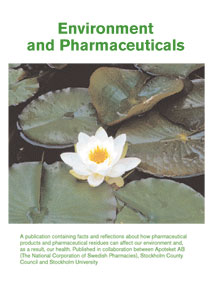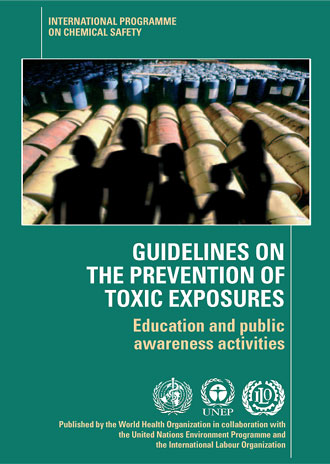Update: 17 April 2024
Environmental Illness
Author: Julie Casper, C. Ac.
There is no escape from environmental toxicity. All of us absorb dangerous levels of toxic heavy-metals and synthetic chemicals from our air, water, food, workplace and schools, even in our own homes, and many common products. Three to four million American children live within one mile of a hazardous waste site. One in four Americans live within four miles of a toxic waste dump.
Contents
- Environmental Medicine
- The Big Picture (6 min.)
- Toxic Body Burden
- In the Midst of a Mass Extinction
- Ecotoxicity: Environment and Pharmaceuticals
- President's Cancer Panel Report
- How to Manage Toxic Body Burden
- Resources
Environmental Medicine
Environmental medicine is a multidisciplinary field involving medicine, environmental science and chemistry. It may be viewed as the medical branch of the broader field of environmental health. The scope of this field involves studying the interactions between environment and human health, and the role of the environment in causing or mediating disease. The basic hypothesis is that health is more widely and dramatically affected by environmental toxins than previously recognized.
With accurate toxicological and metabolic data from a patient's hTMA, an experienced clinician can recommend a safe nutritional protocol that will gently mobilize and remove endotoxins by replacing toxic heavy-metals with preferred nutrient minerals, improving cellular energy production and immune response.
The Big Picture (6 min video)
Toxic Body Burden
Mount Sinai School of Medicine and Environmental Working Group researchers found an average of 91 industrial compounds, pollutants, and other chemicals in the blood and urine of all test subjects studied. Scientists refer to this contamination as a person's body burden. Of the 167 chemicals researchers found: 76 cause cancer in humans or animals, 94 are toxic to the brain and nervous system, and 79 cause birth defects or abnormal development. Also of concern, the dangers of exposure to these chemicals in combination has never been studied. Environmental Working Group: Body Burden study
In 2005 approximately four billion pounds of chemicals were released by industry in the United States. Lead compounds alone amounted to about 469 million pounds, while mercury was approximately 4.4 million pounds (Science News, v171, 2007). These statistics emphasize the importance of screening for heavy metals. Hair tissue mineral analysis remains the most easily obtainable, accurate and economical form of heavy metal screening.
In the Midst of a Mass Extinction
Medical and environmental research is now discovering that many diseases, even so called "effects of aging," are the consequence of the. For both financial and political reasons, toxic exposure is an under reported epidemic that now threatens the very survival of our species. According to the UN Environment Programme, the Earth is in the midst of a mass extinction of life. Scientists estimate that 150-200 species of plant, insect, bird and mammal become extinct every 24 hours. This is nearly 1,000 times the natural or background rate and, say many biologists, is greater than anything the world has experienced since the vanishing of the dinosaurs nearly 65 million years ago.
Ecotoxicity: Environment and Pharmaceuticals
It is simply no longer possible to believe much of the clinical research that is published, or to rely on the judgment of trusted physicians or authoritative medical guidelines. I take no pleasure in this conclusion, which I reached slowly and reluctantly over my two decades as an editor of The New England Journal of Medicine. Marcia Angell, MD. Drug Companies and Doctors: A story of Corruption
A report by a watchdog group the Institute for Safe Medication Practices, a non-profit organization based in Horsham, Pennsylvania, has concluded that prescribed medicines are, one of the most significant perils to human health resulting from human activity. The group based this conclusion on their analysis of the US Food and Drug Administration's database of serious adverse events. They calculated that in 2011, prescription drugs were associated with 2 to 4 million people in the US experiencing "serious, disabling, or fatal injuries,&q including 128,000 deaths.
The huge quantities of medicines ending up as waste or in aquatic systems are a major environmental health issue. The increasing documentation of low dose effects makes pharmaceuticals a priority area from an environmental health perspective. Health Care Without Harm Preventing Environmental Damage from Pharmaceuticals
More than 100 different types of pharmaceuticals or their metabolites have been found in water bodies in Europe and the United States, including drinking water supplies. New research confirms that estrogenic contaminants can contaminate groundwater after being carried by sewage into rivers. Standard water treatment doesn't remove them from waste water effluent, so they pass from treatment plants into rivers. Once in river waters, this research shows they can seep through river sediments and from there potentially into groundwater.
When new medicines are developed their efficacy, safety and convenience are the main criteria researchers consider. However, some molecules have better environmental or PBT (persistence, bio-accumulation and toxicity) profiles than others. Other things being equal, the environmental profile is important to consider when developing a new drug or deciding which molecule to prescribe or purchase.
Society has not yet evolved solutions to the problems, but different medicines have different PBT profiles which purchasing managers, pharmacists and doctors should consider. Likewise the problem of how to deal with pharmaceutical waste is not yet worked out.

Environment and Pharmaceuticals by Apoteket AB
A comprehensive publication containing facts and reflections about how pharmaceutical products and pharmaceutical residues can affect our environment and our health. Published in collaboration between Apoteket AB (The National Corporation of Swedish Pharmacies), and the Stockholm County Council and Stockholm University.
How pharmaceuticals enter the environment.
Pharmaceuticals are biologically active compounds which enter the environment through two principal routes:
- By excretion from the patient mainly in urine either as the original compound or as its metabolites.
- When the drug is disposed of (e.g., flushing pharmaceuticals down the toilet).
The huge quantities of medicines ending up in waste or in aquatic systems are a major environmental health issue. The increasing documentation of low-dose health effects makes pharmaceuticals a priority area from an environmental health perspective. The following quote is from an advisory booklet published by the Stockholm County Council: Environmentally Classified Pharmaceuticals
Pharmaceuticals are often adapted to resist biodegradation and therefore can remain in the environment for a long time. Some pharmaceuticals have been found in drinking water. Access to healthy water is a prerequisite for good health. Since society's use of chemicals, including pharmaceuticals, is continuously rising, the risk is also increasing that these chemicals will return to us in our food and water supply through nature's ecocycle. We have little knowledge of the effects that continuously supplied trace quantities of pharmaceuticals and other chemicals could have on our development, our ability to resist disease and our wellness in general. Stockholm County Council (SCC)
- Healthcare Without Harm (8 min. video) This video clearly points out that industrial toxicity is responsible for much of the current epidemic levels of many health problems. In addition, it acknowledges toxicity problems associated with modern healthcare, especially toxicity in hospitals.
- President's Cancer Panel Report [2010]
- Despite overall decreases in incidence and mortality, cancer continues to shatter and steal the lives of Americans. Approximately 41 percent of Americans will be diagnosed with cancer at some point in their lives, and about 21 percent will die from cancer. The incidence of some cancers, including some most common among children, is increasing for unexplained reasons. President's Cancer Panel Report: Reducing Environmental Cancer Risk - What We Can Do
How to Manage Toxic Body Burden
We can take action to manage this toxic "body burden." We can educate ourselves to avoid or reduce exposure. We can stop supporting businesses and industries that contribute to the problem. We can eat health promoting foods. And, we can practice health strengthening protocols that support our body's own natural detoxification systems and processes.

Download Guidelines ![]()
hTMA mineral balancing has multiple health benefits. It is a safe, gentle form of chelation therapy which uses preferred minerals to support cellular detoxification processes. Also, hTMA data is used to guide supportive nutritional recommendations based on your individual biochemical profile. hTMA mineral balancing optimizes biochemistry to maximize cellular energy production, stress response ability and human performance.
In addition, hTMA data can identify toxic exposure effects on biochemistry and monitor an individual's detoxification progress. Balanced biochemistry means having the optimal mineral levels and ratios necessary to support each cell's specialized function, including communication, nourishment and waste removal (including toxins). Decades of hTMA research has led to significant advancements in the understanding of mineral interrelationships and their biological effects. Using hTMA mineral balancing, you can provide the minerals and nutrition your body needs to protect yourself from the assorted harmful effects of an increasingly toxic environment.
Resources
Environmental illness is a very big topic, find out more:
Find a hTMA Practitioner Back to Top